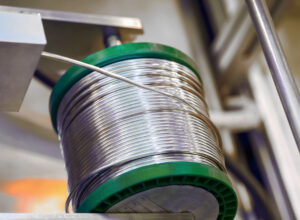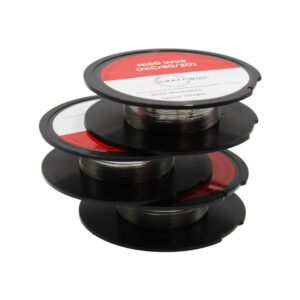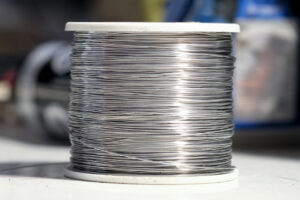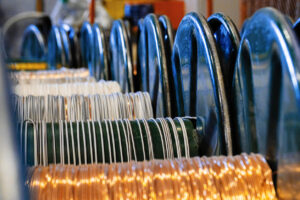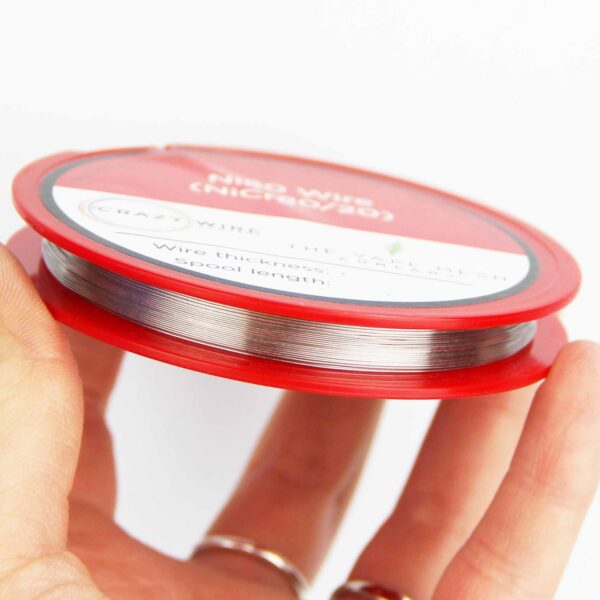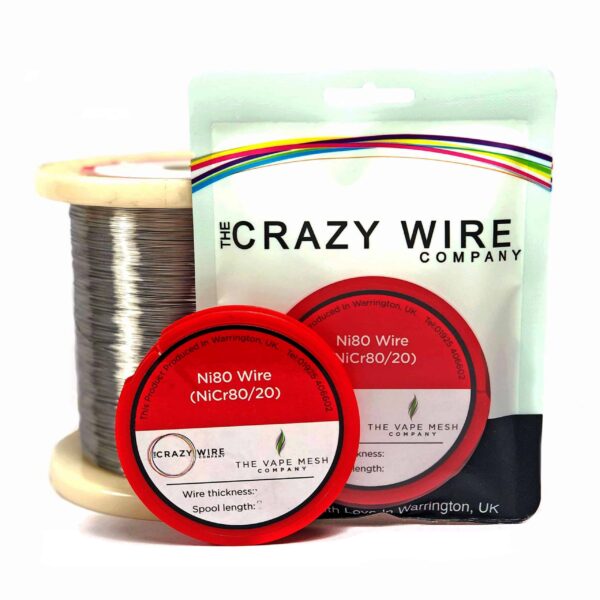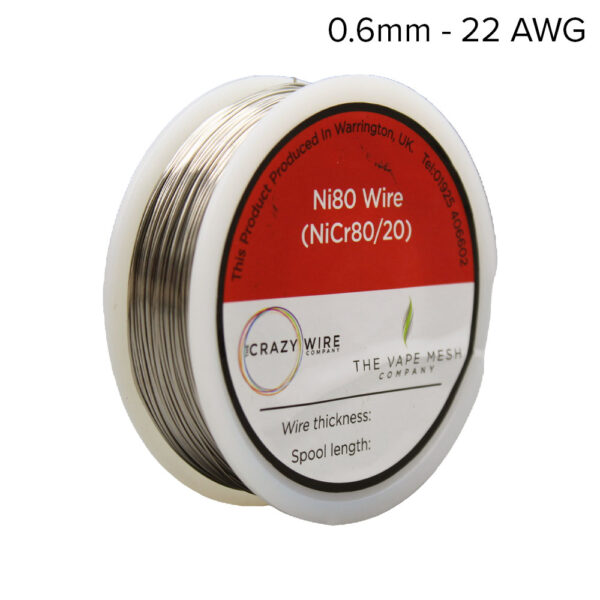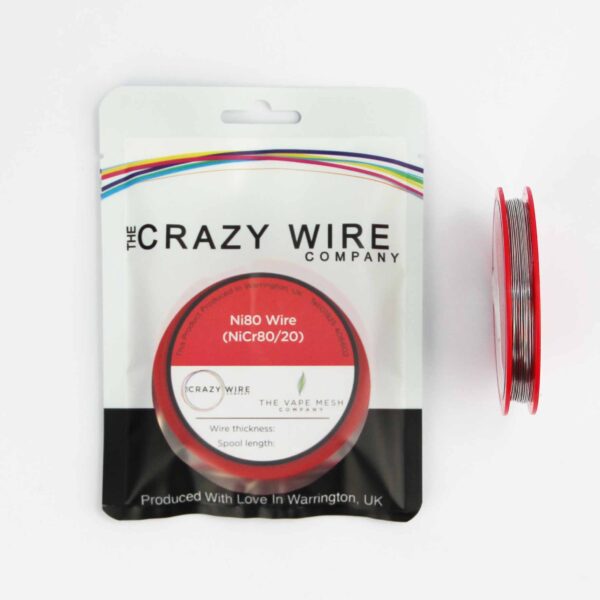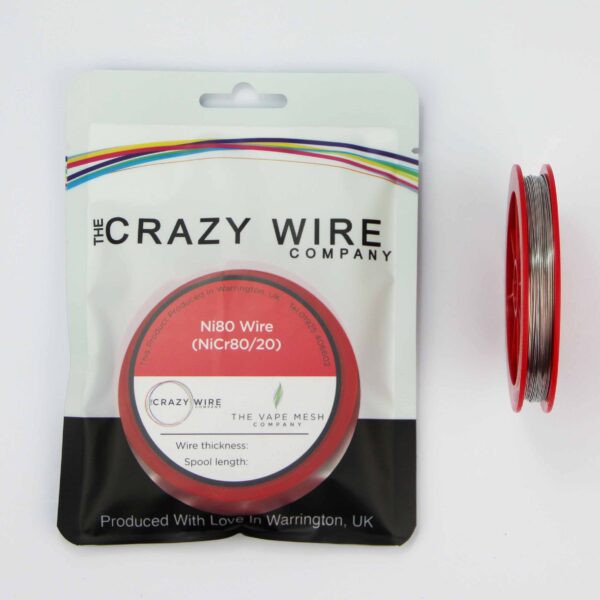Electrical resistance, a fundamental concept in the field of electronics and electrical engineering, is pivotal in determining how a material conducts electricity. Among various materials used for their resistive properties, Nichrome wire stands out due to its unique characteristics.
This special alloy, widely used in both industrial and domestic realms, is renowned for its consistent and reliable resistance. Understanding the resistance of Nichrome wire is crucial for its application in everything from simple household appliances to complex industrial machinery.
This blog delves into the intricacies of Nichrome wire’s resistance, exploring what makes it an indispensable component in numerous applications that require precise heat generation and electrical resistance.
Understanding Nichrome Wire
Nichrome wire, an alloy primarily composed of nickel (about 80%) and chromium (about 20%), is a cornerstone in the world of resistive materials. The addition of chromium to nickel not only enhances its resistance but also improves its strength and oxidation resistance at high temperatures.
Nichrome’s widespread use in applications requiring specific resistance characteristics can be attributed to its stable resistance over a broad temperature range. Unlike some materials that might see a significant shift in resistance with temperature changes, Nichrome maintains a relatively constant value, making it ideal for precision applications. Its ability to withstand high temperatures without degrading or changing its resistive properties significantly adds to its versatility. Nichrome’s resistance to oxidation and corrosion, even in harsh environments, further cements its role in applications that demand longevity and durability.
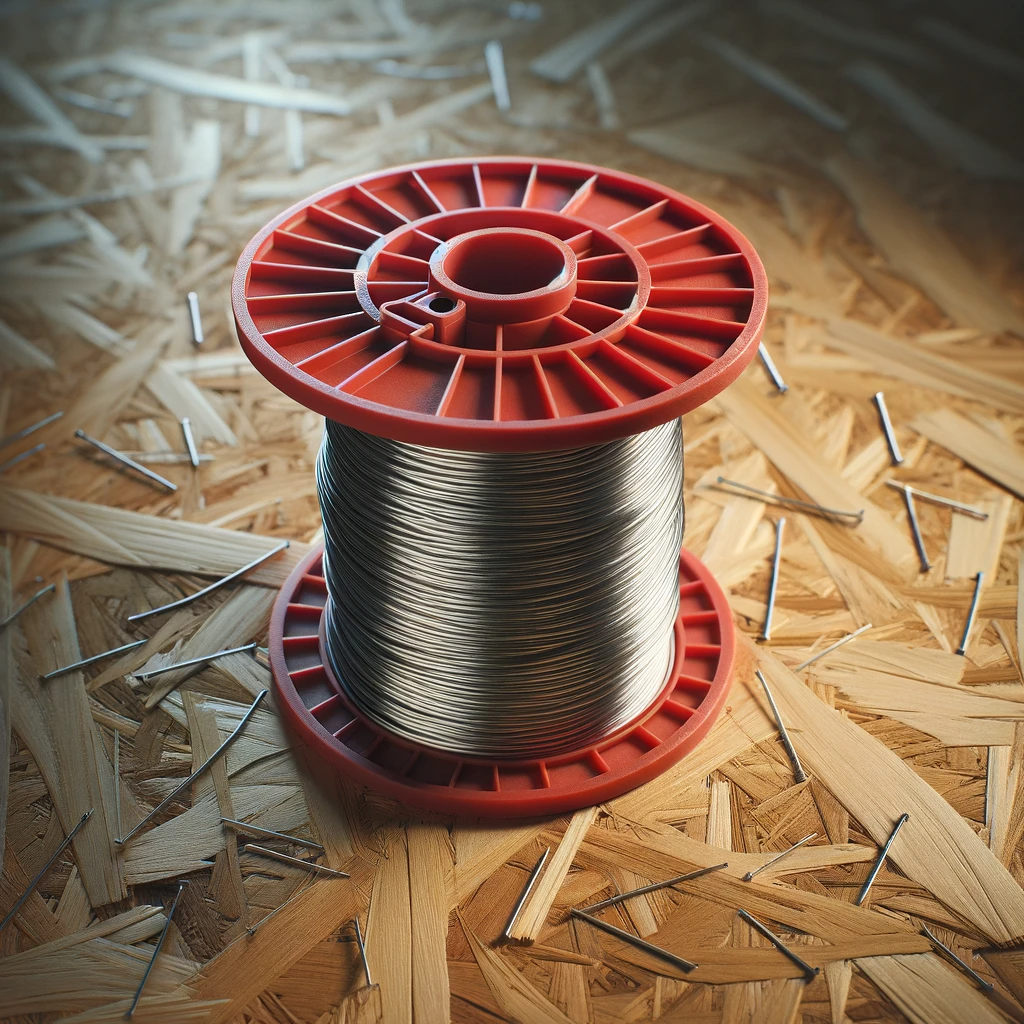
Resistance Properties of Nichrome Wire
The resistance of Nichrome wire is defined by its resistivity, a measure of how strongly the alloy opposes the flow of electric current. Nichrome’s typical resistivity ranges from 1.10 ×10 -6 to 1.50 × 10-6 ohm-meters
, depending on the exact composition and manufacturing process.
This relatively high resistivity makes Nichrome wire an excellent choice for heating elements and resistors. In heating applications, such as in toasters, kettles, or industrial furnaces, Nichrome wire converts electrical energy into heat through its resistance, efficiently producing the required temperatures. In resistors, its stable resistance allows for precise control of current flow in electronic circuits.
Additionally, Nichrome wire’s ability to retain its resistive properties over a wide range of temperatures and under repeated thermal cycling makes it suitable for applications where temperature consistency and material stability are crucial. This versatility explains why Nichrome wire is a preferred material in many heating and electrical applications.
Factors Affecting the Resistance of Nichrome Wire
- Wire Diameter (Gauge): The diameter of Nichrome wire significantly affects its resistance. A thinner wire (higher gauge) has higher resistance than a thicker wire (lower gauge). This is due to the smaller cross-sectional area through which electrons can pass, increasing resistance.
- Length of the Wire: Resistance is directly proportional to the length of the wire. Longer wires have more material for electrons to travel through, encountering more resistance. Conversely, shorter wires offer less resistance.
- Temperature: Nichrome wire’s resistance increases with temperature. As temperature rises, the atoms in the wire vibrate more intensely, making it harder for electrons to pass through, which increases resistance.
Example Calculation:
If a Nichrome wire has a resistivity (ρ) of 1.10×10-6 Ω·m, a length (L) of 1 meter, and a cross-sectional area (A) of 0.5×10-6 m², its resistance (R) can be calculated using the formula R=ρA/L.
R = (1.10×10-6) × (0.5×10-6) = 2.2 Ω
This formula helps in understanding how changing the wire’s dimensions affects its resistance.
Calculating the Resistance of Nichrome Wire
To calculate the resistance of Nichrome wire, you need to know its length, cross-sectional area, and resistivity. The formula R=ρA/L is used, where R is resistance, ρ is resistivity, L is length, and A is cross-sectional area.
Sample Calculation:
For a Nichrome wire of 2 meters in length and 0.75mm diameter (cross-sectional area A approximately 4.42×10-7 m²), and resistivity (ρ) of 1.10×10-6 Ω·m:
R = (1.10×10-6) × (2) / (4.42×10-7) ≈ 4.98 Ω
Applications of Nichrome Wire Based on Its Resistance
The resistance properties of Nichrome wire make it ideal for various applications:
Electric Heaters: In appliances like electric heaters, the resistance of Nichrome wire is utilized to generate heat. The wire’s ability to withstand high temperatures without oxidation or significant change in resistance is crucial here.
Toasters: The consistent resistance of Nichrome wire ensures even heating in toasters, crucial for consistent browning of bread.
Industrial Furnaces: Nichrome’s high resistivity and temperature tolerance are key in industrial furnaces, where maintaining specific temperatures is essential.
The selection of Nichrome wire for these applications is based on the required resistance. The wire gauge, length, and even the winding pattern are chosen to achieve the desired resistance, ensuring the device operates effectively and safely.
Nichrome 80: Characteristics and Applications
Nichrome 80, composed of approximately 80% nickel and 20% chromium, is renowned for its excellent resistance to oxidation and corrosion at high temperatures. With a high melting point of around 1400°C (2550°F) and a resistivity of approximately 1.09×10-6 Ω·m, it is highly suitable for continuous use at temperatures up to 1200°C (2190°F). This makes it ideal for high-wattage applications and situations where a high service temperature is required.
Applications:
In practice, Nichrome 80 is widely used in:
- Industrial heating elements
- Electric ovens
- Kilns
- Manufacture of vaping coils
These applications rely on Nichrome 80 due to its durability and stable resistance. Its ability to withstand frequent temperature cycles without degradation is particularly valued in industrial furnaces and household appliances.
Nichrome 60: Properties and Uses
Nichrome 60, containing around 60% nickel and 16% chromium, balanced with iron, offers slightly different characteristics. Its resistivity is around 1.11×10-6 Ω·m, making it slightly higher than Nichrome 80. This alloy can withstand temperatures up to 1150°C (2100°F). It also provides good resistance to high-temperature oxidation and maintains a stable structure at high temperatures.
Applications:
This type of Nichrome is commonly used in lower temperature applications compared to Nichrome 80, such as in:
- Hair dryers
- Heat guns
- Some types of industrial machinery
Its slightly higher iron content makes it more ductile and less expensive, which is advantageous for applications where extreme temperature resistance is not crucial.
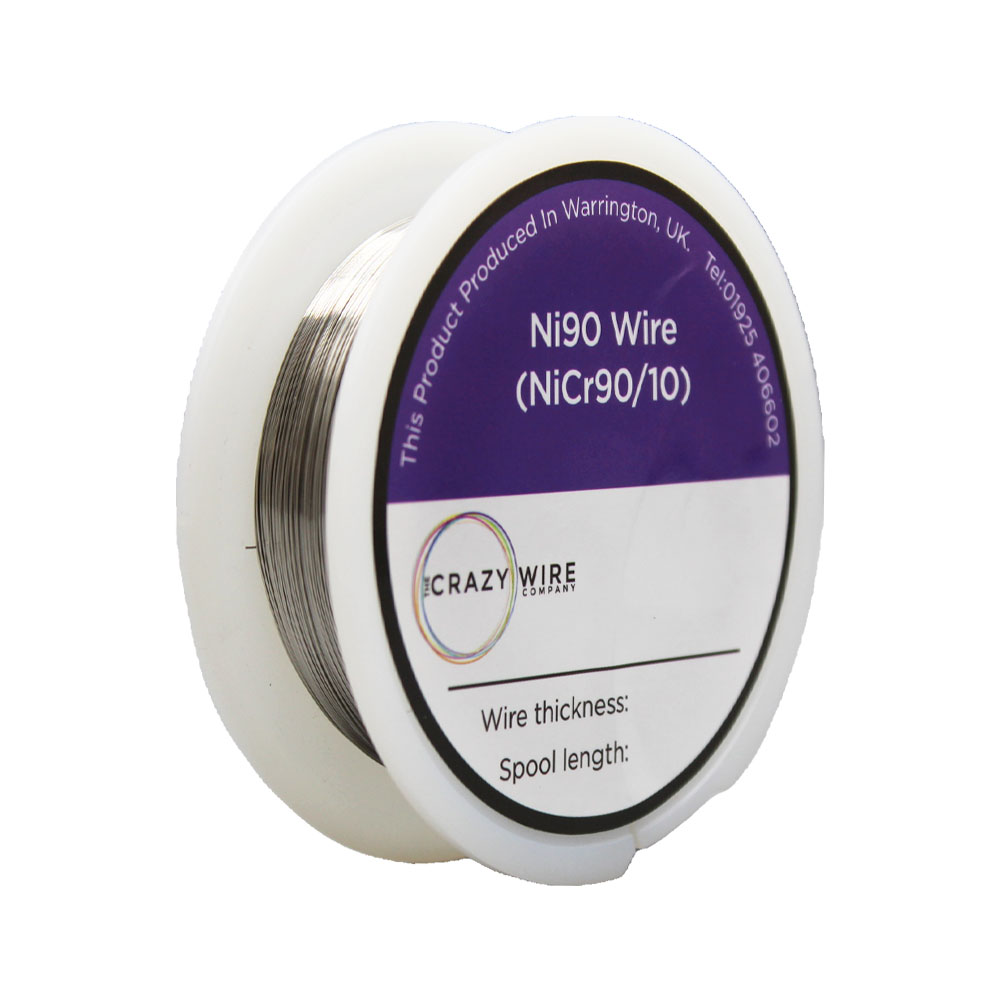
Nichrome 90: Features and Industrial Relevance
Nichrome 90, consisting of approximately 90% nickel, is an alloy known for its exceptionally high resistivity of about 1.18×10-6 Ω·m. It can operate at temperatures up to 1250°C (2280°F). This alloy is often chosen for applications requiring a very high temperature and where maximum longevity is needed.
Typical Applications:
Typical applications of Nichrome 90 include:
- High-temperature industrial furnaces
- Kilns
- Certain types of aerospace engineering applications
Its higher cost, due to the increased nickel content, is justified by its superior performance in these demanding environments.
Available Nichrome Wire Options:
| Ni80 | Ni80 | Ni90 | Ni90 | Ni60 | Ni60 |
| Diameter (mm) | AWG | Diameter (mm) | AWG | Diameter (mm) | AWG |
| 0.05 | 44 | ||||
| 0.06 | 42 | ||||
| 0.07 | 41 | ||||
| 0.08 | 40 | 0.08 | 40 | ||
| 0.09 | 39 | ||||
| 0.1 | 38 | 0.1 | 38 | ||
| 0.12 | 36 | ||||
| 0.125 | 36 | ||||
| 0.13 | 36 | 0.13 | 36 | ||
| 0.14 | 35 | ||||
| 0.15 | 35 | ||||
| 0.16 | 34 | ||||
| 0.17 | 34 | ||||
| 0.18 | 33 | ||||
| 0.2 | 32 | 0.2 | 32 | ||
| 0.21 | 32 | ||||
| 0.23 | 31 | ||||
| 0.25 | 30 | 0.25 | 30 | 0.25 | 30 |
| 0.27 | 29 | ||||
| 0.28 | 29 | ||||
| 0.29 | 29 | ||||
| 0.3 | 29 | 0.3 | 29 | ||
| 0.32 | 28 | 0.32 | 28 | 0.32 | 28 |
| 0.35 | 28 | ||||
| 0.37 | 27 | 0.37 | 27 | ||
| 0.38 | 27 | ||||
| 0.4 | 26 | 0.4 | 26 | 0.4 | 26 |
| 0.42 | 26 | ||||
| 0.45 | 25 | 0.44 | 25 | ||
| 0.5 | 24 | 0.5 | 24 | 0.5 | 24 |
| 0.54 | 23 | ||||
| 0.6 | 22 | 0.6 | 22 | ||
| 0.64 | 22 | 0.64 | 22 | ||
| 0.7 | 21 | 0.72 | 21 | ||
| 0.8 | 20 | 0.81 | 20 | 0.8 | 20 |
| 0.9 | 19 | 0.9 | 19 | 0.9 | 19 |
| 1 | 18 | ||||
| 1.15 | 17 |
Measuring and Testing Nichrome Wire Resistance
Accurate Measurement of Nichrome Wire Resistance:
Accurate measurement of Nichrome wire resistance is crucial for ensuring optimal performance in various applications. Common methods for testing resistance include:
- Multimeter Testing: The most straightforward method is using a digital multimeter. By setting the multimeter to the resistance measurement mode and connecting its probes to the ends of the Nichrome wire, you can get a direct reading of its resistance.
- Ohm’s Law Method: For a more involved approach, apply a known voltage to the Nichrome wire and measure the current flowing through it. Then, calculate the resistance using Ohm’s Law (R=V/I, where R is resistance, V is voltage, and I is current).
- Four-Wire Kelvin Method: This method is used for more precise measurements. It involves using four probes to separately inject current and measure voltage drop along the wire, minimizing the effect of contact resistance.
Accurate resistance measurement is essential, especially in applications where precise temperature control is needed, such as in heating elements and industrial processes.
Nichrome wire’s resistance plays a pivotal role in its functionality across a myriad of applications. From household appliances to industrial equipment, understanding and accurately calculating the resistance of Nichrome wire is fundamental for effective use. Its ability to sustain high temperatures while maintaining stable resistance makes it an invaluable material in the realm of electrical and heating applications.
To learn more about Nichrome wire and other resistive materials, visit our website at www.wireandstuff.co.uk.
Our team is equipped to provide expert advice and high-quality Nichrome wire tailored to your specific project needs.
Contact us for guidance on selecting the right wire for your application and to ensure your project’s success.
We offer also a massive range of stainless steel wire and nichrome wire through our store. Choose the wire that you want to work with and we’ll get spooling.
If you’re interested in learning more about wire, check out our other blog on Everything You Need to Know About Wires.
We are also proud to supply this product on our highly popular eBay store, check us out there too.
Thank you for checking out our site.
- MULTIBUY SAVINGS – ORDER 5 FOR 20% OFF
- FREE UK Delivery For All Orders Over £25
- Immediate Express Dispatch From Stock
- Orders Fulfilled From Warrington, UK
- Tracked Delivery with Order Updates
- 30-Day Unused Returns Accepted



